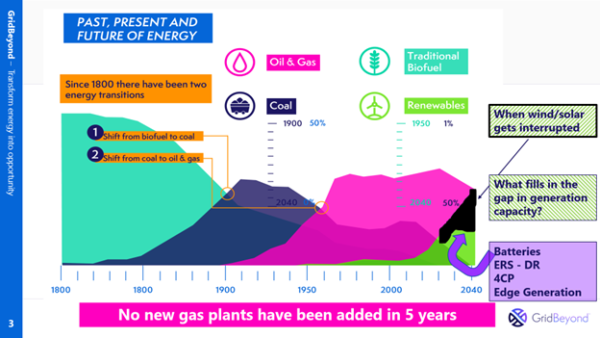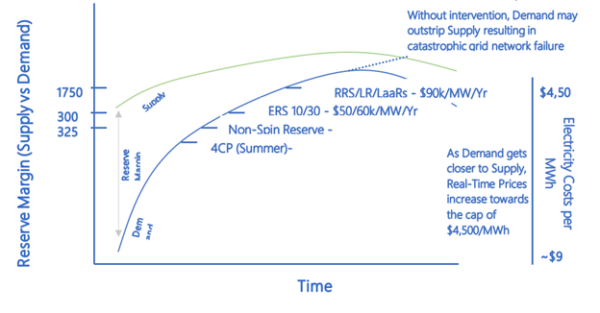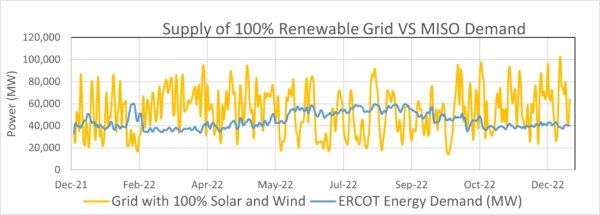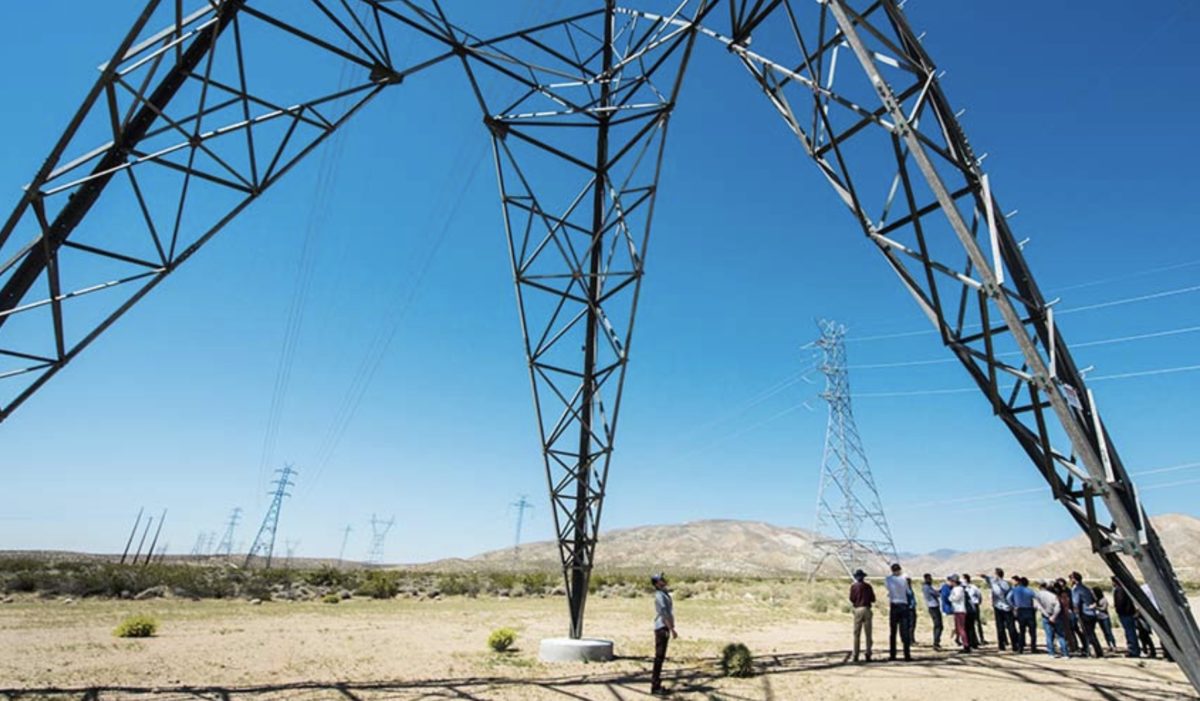As the grid continues to add increasing capacity of renewables generation in a bid to transition the energy sector toward net zero, it has to balance those moments when interruption is inevitable. One approach is to increase levels of flexible generation and battery storage and to take action to reduce demand. Demand Response is the incentive paid by Independent System Operators (ISO’s like ERCOT, MISO, IESO, NYISO, NEISO, PJM) to electricity consumers to voluntarily drop power use during times when demand is heading precariously toward the grid’s supply limit.
As you can see in the graphic, gas generation, especially after fracking resulted in a swelling of supplies and lower prices, in 1960 gas overtook coal to become the dominant fuel in the generation mix. But the next generation transition is already underway.

Image: GridBeyond
In ERCOT for example, this transformation is threatening gas generation as a new build gas generation plant hasn’t made investor sense in over five years. Even after winter storm Uri where the grid came within three minutes of a complete black swan shut down that would have left most of Texas without power for tow to three months, new gas-fired generation is still not on the horizon. So the question is, what are the perils and what are the opportunities of such a transformation and what are you going to do to plan, process, and procure for what lies ahead?

Each ISO establishes a Reserve Margin (RM), which determines how much electricity can be produced at the most efficient level of resource adequacy against anticipated demand. ERCOT, for example, operates with a RM target of 14%. In 2019, however, the RM fell to about 7% leaving a narrower margin of error. When that happens, the supply line drops, as represented in the graph below. At this point, it’s everyone’s responsibility to fill in the gap as no one can afford for the demand line to breach the supply limit. In ERCOT, for example, the ISO uses a number of levers from multiple programs to curtail the demand line. But the real question is, how frequently and how often will this scenario play out?
Prior to August 2019, ERCOT had a frequency of distributed resource (DR) events where one program was dispatched about every 5 years, and another, about every 10 years. The grid at that time was highly reliable, efficient, responsive, and considered a good value. But it’s carbon emission profile was not.


Somewhere in the not-too-distant future, wind and solar will surpass gas as the largest contributor of generation capacity in many ISO’s. But let’s see what a 100% renewable generation system looks like. If we were to graph out that prospect, it would look something like an EKG.

So where do we find ourselves today? The answer is somewhere between where we were 3-5 years ago and the graph above. The challenge is to determine where and how we will make up for interruptions. The “gap” solutions are where you as an energy manager need to prepare because with every MW of solar or wind we add to the grid, we are adding more volatility and more vulnerability. What are these “gap” measures that call attention to “if you are not with us, then you’re against us” full market approach?
After winter storm Uri, Texas saw an increase in the number of back-up generator installations precisely to address power insecurity. Signs have been pointing in this direction in ERCOT for many years. While wind and solar have been growing with the help of subsidies and ever-evolving power trading arbitrage, there have been an increasing number of DR dispatches by ERCOT. While some of these dispatches have lasted little more than an hour (like on July 13th of this year) some have lasted around 100 hours (like during winter storm Uri). While they shed power, and while they were offline, a MW in some programs paid almost $1.0M per MW for just that week.
Back up generation provides a source of hard-currency monetization by exporting to the grid on a certain strike price, say $90/MWh, and run until the price drops back below that point. If the ISO calls a DR event, the site generator goes to island mode removing the demand from the grid, meeting the DR obligation, and maintaining resiliency. With the growing expansion of renewables, we can anticipate DR events happening more frequently.
Successfully navigating the future
Every consumer and every ISO finds itself somewhere between what we expected of our electricity grid three to five years ago to somewhere in the future of growing volatility that comes from expanding renewables.
Until batteries or onsite generation investments hit the ROI scale, navigating through this transformation requires an integrated AI and automation technology system designed to handle the more frequent and more severe power interruptions that lie ahead and the increasing number of DR events aimed at preventing these.
Manual-based Qualified Scheduling Entities (QSE) were an adequate service in the past when these events were considered rare. The future is at our feet and ERCOT’s experiences are an indication that renewable power adoption is creating growing power insecurity. Finding a QSE with controls and AI expertise that has experience with these looming conditions is paramount to navigating successfully toward a financially rewarding and carbon reducing future.

GridBeyond
Joe Hayden is vice president of revenue, North America, at GridBeyond. Prior to joining GridBeyond, Joe lead the ERCOT market as GM and VP for CPower.
The views and opinions expressed in this article are the author’s own, and do not necessarily reflect those held by pv magazine.
This content is protected by copyright and may not be reused. If you want to cooperate with us and would like to reuse some of our content, please contact: editors@pv-magazine.com.








“While wind and solar have been growing …there have been an increasing number of DR dispatches by ERCOT.”
You cannot deny Mr. Hayden’s thesis that load management (the instantaneous analog to good, old, high-ROI energy conservation) will be an essential factor in weathering the simultaneous greening of grids and transportation. Sadly, though, the quote above tags him just another blame-renewables Texas grid manager. Climate-change effects like winter storm Uri and this summer’s heat waves have driven frequency and severity of grid stress. As MISO’s former GM he knows that. And he knows it was crashing gas-fired peakers and a curtailed supply of residential heating fuel that most brought on the crisis. Oh, and the failure of MISO and utility managements to winterize generation assets. Oops!